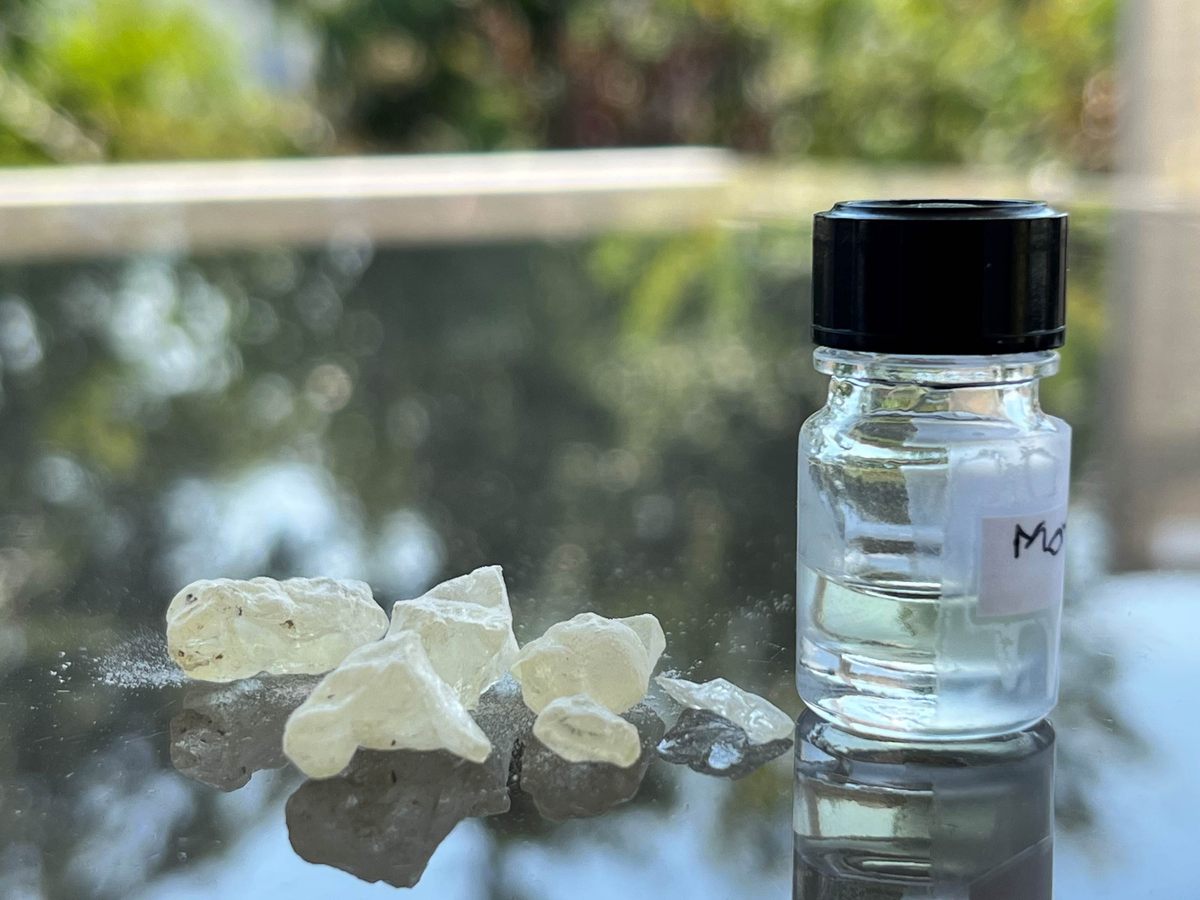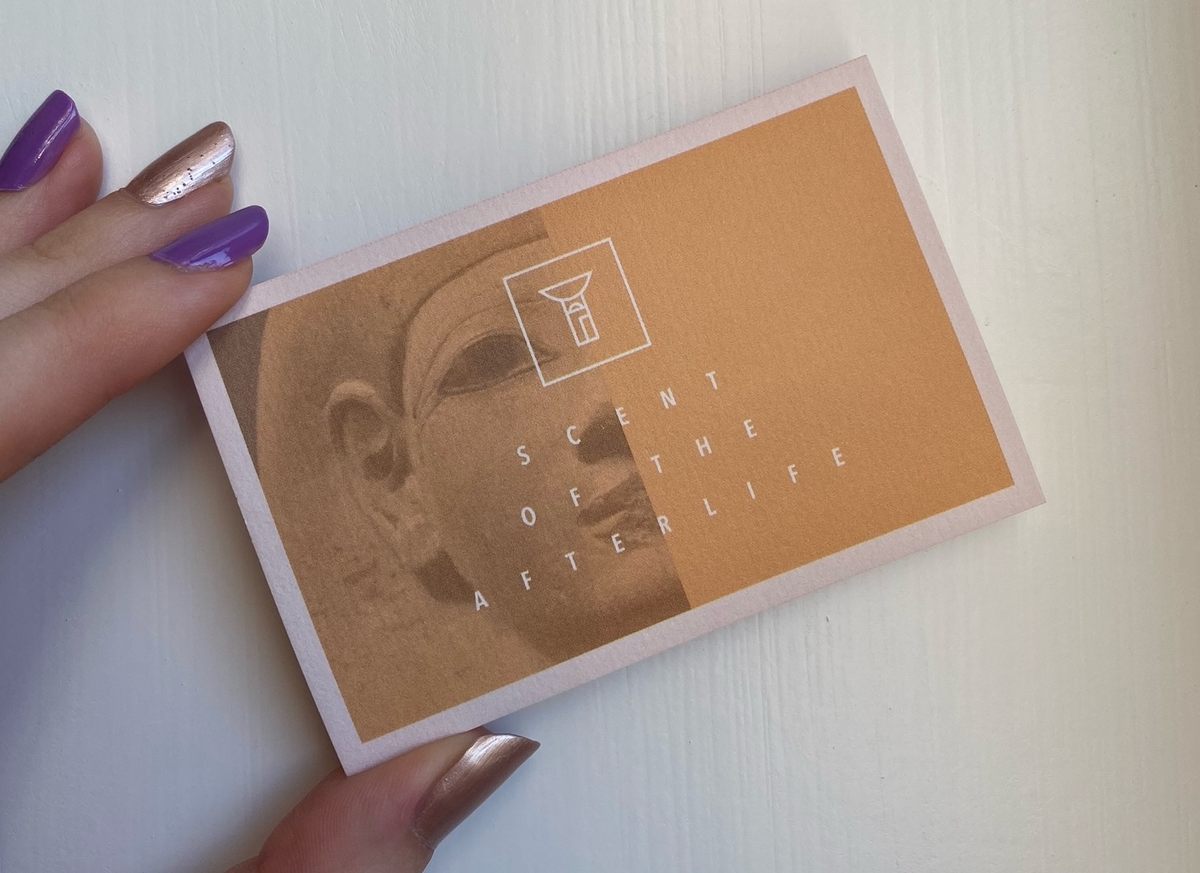Get a Whiff of Ancient Egypt’s ‘Scent of Eternity’
Experts reconstructed the smell of mummified organs—and it’s actually pretty pleasant.
We expect death to stink. In our olfactory memory, the idea of decaying organic remains rarely conjures a pleasant odor: sour, fetid, nauseating. But in ancient Egypt, death—and therefore the afterlife—had a different aroma.
“They [ancient Egyptian texts] say that when ‘people die, they rot, they decay, they stink, and they will become countless worms.’ This is how they describe it,” says Barbara Huber, doctoral researcher at Max Planck Institute of Geoanthropology in Germany. “If you stink it means your body is already decaying—a bad, bad thing. So in order to be able to live for eternity, you need to smell good.”
Imagine notes of beeswax, tree resin, and balsam, with a hint of tar and sweetness. Some of the ingredients behind this woodsy, warm scent have the added benefit, used properly, of preserving organic matter. “It’s not like a perfume per se, or the concept we have today of a perfume. It was really for preserving the body for the afterlife,” says Huber. The ancient Egyptians believed a soul could return to an intact body after death. “Preserving the body is of utmost importance,” she adds. “But another thing that is really interesting is the ancient Egyptians really didn’t want to stink in the afterlife, and this is where the smell and the nice aromas come into play.”
Now that historic scent is coming back to life. Olfactory designer Carole Calvez in France and sensory museologist Sofia Collette Ehrich at Odeuropa, a European research project dedicated to olfactory heritage, spent over six months helping Huber recreate the scent of a complex mummification balm for her doctoral dissertation. The concoction’s long-elusive ingredients were teased out in a recent study in Scientific Reports. Now, scent enthusiasts can get a nose-ful of the ancient recipe at a new exhibition on ancient Egypt at the Moesgaard Museum in Denmark.

“For a very long time, the history of the past was incredibly odorless.” says Huber, lead author of the study. “You excavate, you see the temples, you see the portraits—everything is about sight. And it’s really hard to recreate past smells because they don’t materialize like other objects, they’re these ephemeral, volatile phenomena that you cannot really recreate. Because of chemical archaeology, you’re now kind of able to do that by identifying tiniest traces like we did. All of a sudden this sensory world is open.”
In 1900, some 20 years before he would famously open the tomb of Tutankhamun, British Egyptologist Howard Carter found the remains of Senetnay, an Egyptian noblewoman who lived in the 15th century B.C., during Egypt’s New Kingdom period. Four canopic jars with lids shaped like human heads were found, containing organs—intestines, stomach, lungs, and liver—customarily removed during the mummification process. In 1935, two of the jars, once containing her liver and lungs, were added to the Egyptian collection at the Museum August Kestner in Hanover, Germany. They managed to weather World War II, thanks to storage in a salt mine.
The actual remains are long gone, but residue inside the jars holds clues to an incredibly complex recipe, and offers key details about the life of Senetnay and how highly she was regarded during the reigns of Thutmose III and his son Amenhotep II. In 2021, the research team swabbed the jars and then analyzed the contents. The two jars had slightly varying concoctions, possibly to preserve different organs.
“We have so far not found a mummification balm that is more complex than that of the lady Senetnay from this early period,” says Huber.
The balms were made of animal fats, resins, beeswax, naturally occurring petroleum (bitumen), benzoic acid, and local and foreign plant oils. A vanilla-scented compound called coumarin, found in cinnamon and many other plants, also lingered. The exotic concoction, with many ingredients from around the ancient world, points to Senetnay’s high social status, having served as the wet nurse to Amenhotep II, says Huber.

The researchers had a long list of ingredients, but no recipe. How to delicately combine them into a historically accurate scent was a mystery. That’s where the experts came in. Calvez and Ehrich have worked together in the past to make other “historically informed scents,” including that of the Liberty Bell, a strong, unpopular metallic odor. This herbal scent stands out as rather pleasant against it, according to the experts. “There is some technicality to the process,” says Calvez, “and then there is some imagination.”
Calvez crafted a few scents in France and mailed them out to Ehrich and Huber in tiny vials. After selecting one together, Calvez made five or six more variations. Together, they landed on the perfect concoction, which is based specifically on the contents of Senetnay’s lung jar.
“I found that the smell has a lot of different layers,” says Huber. “When I first smell it, it has a very dominant aroma of resinous pine, woody, like you would smell as you go through a forest. Then, as things evaporate, another smell comes through—warm, sweet, more kind of like balsamic. And I love that it has these layers. For me, it makes me experience the different layers of mummification, in a way.”
That’s what the team hopes this historical scent can do: bring history to life in a new way. “I think olfactory storytelling is extremely powerful, because you’re able to not only let the people see and learn, but they can actually participate in something,” says Huber. “Also, not everybody can see, so you kind of include other people in a different way where they can also participate. They can not only hear the audio guide, you can also smell it. It connects people to the present and the past in a very unique way.”

For those who want a sniff of “eternal life,” now is the time. Originally, Huber wanted to put the scent on printed cards to hand out when she presented her dissertation, but when museum staff heard about her work, they wanted in—without a single sniff. “I don’t think that we anticipated this kind of response to our fun idea of just making a scent out of Barbara [Huber’s] research,” says Ehrich. “So it was a happy surprise.” The scent will be on display for guests’ olfactory pleasure at the Moesgaard Museum’s exhibit, Ancient Egypt—Obsessed With Life, which goes on view in October 2023. You might even like it.
“People know a lot about mummies and they have these preconceived notions about them,” says Ehrich. “When you think about a decaying body or a mummy, this is the opposite. This smells very good because it’s something that’s preserving the mummy. You think, ‘Oh, it’s the smell of the afterlife, that could be kind of a bad smell,’ but it actually smells very good.”
















Follow us on Twitter to get the latest on the world's hidden wonders.
Like us on Facebook to get the latest on the world's hidden wonders.
Follow us on Twitter Like us on Facebook